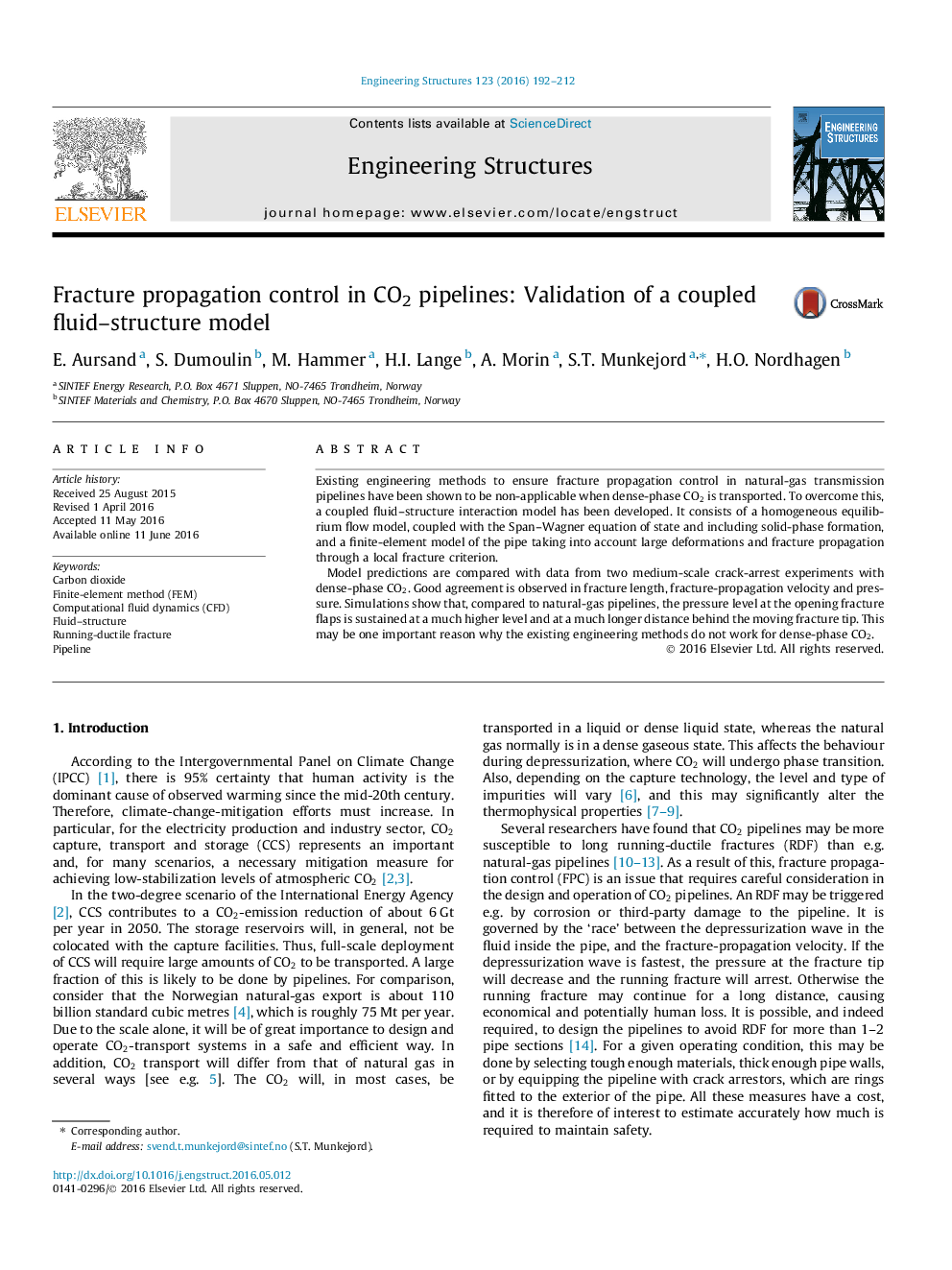| Article ID | Journal | Published Year | Pages | File Type |
|---|---|---|---|---|
| 265678 | Engineering Structures | 2016 | 21 Pages |
•We model running-ductile fracture in CO2-transport pipes using computational methods.•The fluid and structure models are physically based and fully coupled.•Good agreement is found with two medium-scale crack-arrest experiments with CO2.•The pressure load on a CO2 pipe is more severe than on a natural-gas pipe.•This may be a reason why two-curve methods do not work for dense-phase CO2.
Existing engineering methods to ensure fracture propagation control in natural-gas transmission pipelines have been shown to be non-applicable when dense-phase CO2CO2 is transported. To overcome this, a coupled fluid–structure interaction model has been developed. It consists of a homogeneous equilibrium flow model, coupled with the Span–Wagner equation of state and including solid-phase formation, and a finite-element model of the pipe taking into account large deformations and fracture propagation through a local fracture criterion.Model predictions are compared with data from two medium-scale crack-arrest experiments with dense-phase CO2CO2. Good agreement is observed in fracture length, fracture-propagation velocity and pressure. Simulations show that, compared to natural-gas pipelines, the pressure level at the opening fracture flaps is sustained at a much higher level and at a much longer distance behind the moving fracture tip. This may be one important reason why the existing engineering methods do not work for dense-phase CO2CO2.
Graphical abstractFigure optionsDownload full-size imageDownload as PowerPoint slide
